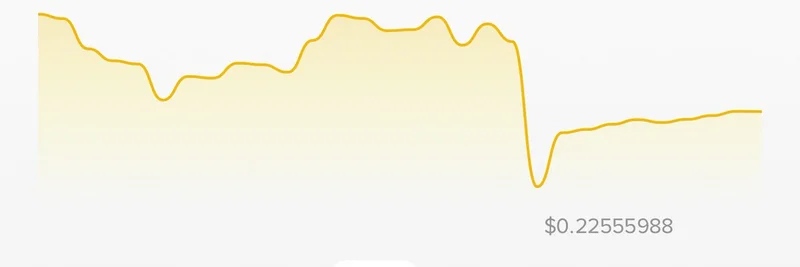If you've been trading crypto for a while, you know that volatility is part of the game. But what happens when the exchange itself becomes the biggest risk? That's exactly what unfolded on October 11, 2025, during a brutal market dip on Binance. A thread from market maker @GammaPure, shared by a friend in the industry, pulls back the curtain on how system failures turned a bad night into a catastrophe for traders, including heavy hitters with millions on the line.
The Night the Safety Net Failed
Picture this: It's around 5:12 AM Beijing time, and the crypto market starts tanking hard. For @GammaPure's friend, let's call him C, this wasn't his first rodeo. As a market maker, he runs sophisticated algorithms that kick in during downturns to reduce positions and limit losses. These are "ReduceOnly" orders—basically, instructions to sell off holdings without adding more risk. They're designed to be the emergency brake in volatile times.
But on this night, Binance's system said no. Over 106 minutes, C's bots tried more than 200 times to cut positions in DOGE and XRP, only to get slammed with error codes like -2010 (new order rejected), -4118 (ReduceOnly failed), and even HTTP 503 (service unavailable). It's like trying to escape a burning building, but the fire exit is locked.
The result? Positions that should have been trimmed stayed open, racking up unrealized losses that eventually crystallized into real pain: about $443,835 on DOGE and $148,000 on XRP, totaling nearly $592,000 wiped out. And this wasn't just one account—similar stories echoed from other market makers.
Digging into the Error Codes and Evidence
To break it down simply, these errors point to two layers of problems on Binance's end. First, infrastructure issues like "server busy" signals suggest the platform was overwhelmed. Second, business-layer rejections meant that even priority orders for risk reduction were getting bounced. Binance's own docs promise that ReduceOnly orders get VIP treatment during congestion, but the logs tell a different story—a near 100% rejection rate.
C and others cross-checked this with price deviation reports from analyst Benson (deviation report, charts). Binance, usually the deepest liquidity pool, saw prices plunge harder and longer than competitors. Tokens like ATOM hit absurd lows like $0.001, not because no one wanted to buy, but because bids couldn't get through.
This wasn't random bad luck. Market makers, who typically provide the bids that stabilize prices, were locked out too. Without those supports, the order book thinned out, and sells hammered prices down unchecked. Worse, Binance's prices feed into indexes and liquidation triggers across the industry, turning a local glitch into a market-wide spiral.
The Portfolio Margin Pitfall
Adding fuel to the fire was Binance's Portfolio Margin (PM) system. This advanced account type lets traders close all positions into specific assets like ETH or stablecoins. Sounds handy, right? But it's manual-only—no API support—which means in a crisis, you're clicking buttons while the market melts. The thread suggests flaws here, like inadequate margin checks, led to wild price swings in assets like WBETH ($460) and BNSOL ($37).
Under stress, PM accounts with even low leverage got caught in a "death spiral" of liquidations. The system, still maturing, couldn't handle the concurrency, amplifying the crash.
Why This Matters for Meme Token Traders
Meme tokens like DOGE thrive on hype and quick moves, but they're also liquidation magnets in downturns. This incident highlights how exchange infrastructure can amplify risks. If even market makers with top-tier setups get burned, what about retail traders chasing the next pump? It's a wake-up call: Diversify exchanges, understand your platform's limits, and always have a Plan B for when tech fails.
Binance has faced scrutiny before, from regulators like the CFTC and SEC over similar issues on other platforms (related cases). The thread calls for transparency—audit reports, logs, and fair compensation. So far, responses have been evasive, with hints that full payouts could be massive given the ripple effects.
Lessons from the Chaos
In the end, this isn't just about one bad night; it's about trust in the systems powering crypto. Traders bore the market risk, but platform failures? That's on the exchange. If you're deep into meme tokens or any crypto trading, stories like this remind us to stay vigilant. Keep an eye on updates from @GammaPure and others—fairness in crypto starts with holding giants accountable.
For more insights on meme token trends and blockchain news, stick with Meme Insider. What's your take on this Binance drama? Drop a comment below!


